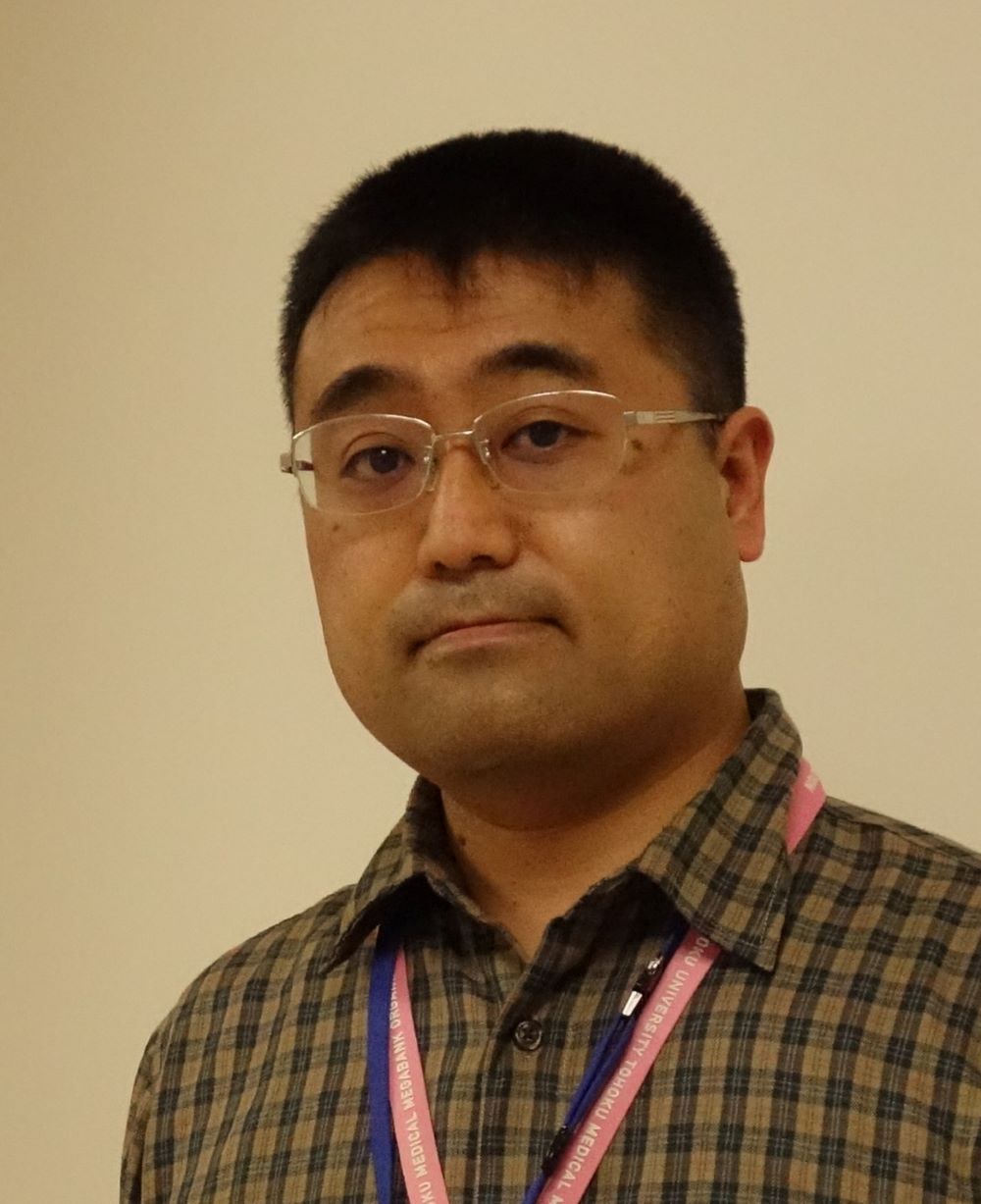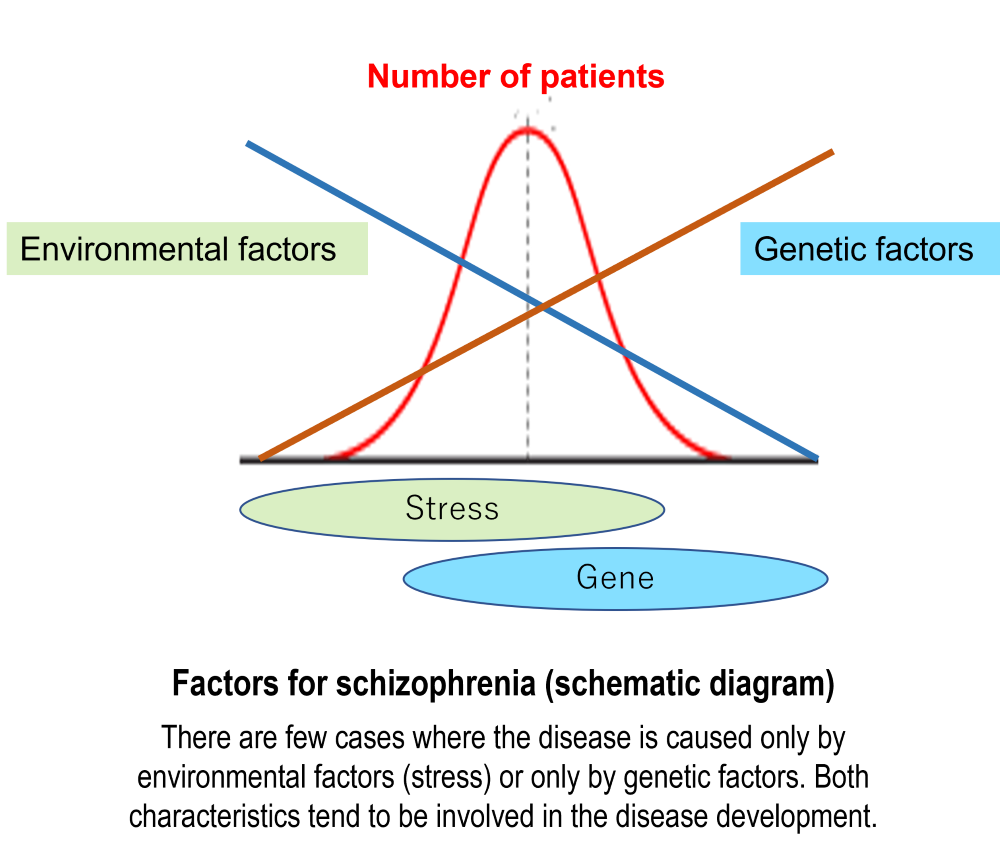2021.11.26
【Academic Research】Research on Factors of Psychiatric Disorders by Analyzing the Vast Amount of Brain Data: Considering Disaster Psychiatry Biologically, Focusing on the Key Concept of “Stress”
▷Introduction
Schizophrenia is a life-altering mental disorder that affects about 1% of the population, and thus is an important issue that psychiatry has addressed. There are two aspects that contribute to schizophrenia: inherited genetic factors and acquired environmental factors. A disaster can also become an environmental facet in schizophrenia.
Dr. Mizuki Hino, an assistant professor at IRIDeS, focuses mainly on the biological aspects of schizophrenia, examining the human brain in detail to discover the various factors associated with this mental disorder.

Specially Appointed Assistant Professor Mizuki Hino
Disaster Psychiatry Lab
▷Examining what happens when cells are subjected to stress
Hino has been studying changes that occur when cells are stressed from the time he was a university student until after he received his Ph.D.
“Stress” was originally a technical term in physics and engineering: when an object is pressured externally, its shape becomes distorted, and the force accumulated internally tries to repel against the outside pressure. The situation where the object is trying to return to its original state is called a “state of stress.” Later, “stress” began to be used also as a medical term, based on the idea that strain appears as a nerve or physical disorder when an external force is applied to a human or animal. Furthermore, “stress” has extended beyond the academic world and now is used in our everyday language.
If the strength of the force is increased to a certain level, the body and mind will return to normal when the force is relaxed. However, if too much force is applied, the body and mind will break down. The force that strangles the mind and body—the factor that causes stress—is originally defined as a “stressor,” but it is also called “stress” in daily life (e.g., “Waiting for you is a stress on me.”).
Within the field of medicine, the term “stress” has become more widely used. It has been expanded to include not only stress in animals and humans as living individuals, but also stress at the cellular level and in the components of cells (e.g., “endoplasmic reticulum (ER) stress”). This stress at the cellular level was Hino’s first research theme.
He majored in cell biology in graduate school and studied the changes that occur when cells are exposed to heat, a stressor. “When exposed to heat or other stresses, cells synthesize a set of proteins that protect themselves. It has also been shown that these proteins make cells more resistant to subsequent stimuli when cells are first exposed to an acceptable stress,” explains Hino. After earning his Ph.D., he observed the changes in cells when they were irradiated. “When skeletal muscle cells were irradiated with ionizing radiation, cytoplasmic autophagy activity was enhanced. It is possible that autophagy1) participated in the active removal of damaged area in the cells.” These research findings are only at the cellular level and cannot be immediately applied to humans as individuals. However, it is informative to know that cells under stress react in order to survive.
▷Participation in brain research in the field of psychiatry
Later, Hino started participating in the research on psychiatry, employing the methods he had developed in biology. One of the most popular methods in psychiatry has been psychoanalysis wherein the analyst treats a patient through dialogue. This is because mental activities are very complex, and also because it is difficult to directly analyze the brain of a living person. In recent years, however, psychiatric research based on material evidence has developed further, and is examining donated brains after death.
Hino participated in brain research on schizophrenia for the first time at his previous affiliation, Fukushima Medical University, and has continued the research since arriving at IRIDeS in April 2021. “We have been investigating the characteristics of the brains of patients with schizophrenia at the cellular, molecular, and genetic levels. As a result, we have discovered several proteins, their RNAs, and metabolites, whose expression levels are affected in the brains of patients with schizophrenia. On the other hand, we have also realized that schizophrenia cannot be easily understood through existing methods. I consider that this disease is caused by a complex combination of genetic and environmental factors,” says Hino.
Another challenge is how to decipher the vast amount of data collected on bio-information, including data on the brain. The complete nucleotide sequence of the human gene was determined in 2003, which was realized by a huge project over 13 years involving the United States and six other countries. Today, the same analysis can be conducted in one day, using a single machine and at a much lower cost (100,000 yen). Since most of the data in the entire nucleotide sequence is common to all humans, researchers often extract and study only the gene sequences that characterize an individual. However, the amount of such data is still huge. “For example, with regard to the generic sequences, which characterize an individual, data over hundreds of thousands of items can be easily obtained from just one person. Combining the data with ones of, say, 20 people, the data amount becomes even larger,” states Hino.
Based on these results, his research team looks for patterns and characteristics. “In the brains with schizophrenia, we have found characteristics such as a particularly large amount of a certain protein. However, the elimination of this protein does not simply cure schizophrenia. Thus, we should conduct further research, such as looking for the relationship between this result and the other characteristics we found,” says Hino. In dealing with huge amounts of data, Hino works with many other researchers including informatics specialists. Mysteries and hints are buried within the huge quantity of data, and when scientists dig something up, further mysteries appear. “With advancement of machines that handle bio-information quantitatively, making use of exhaustive data has recently become an important topic in medicine in general,” says Hino.

▷Considering biological and environmental factors to understand psychiatric disorders
Hino has been conducting research on schizophrenia mainly from biological perspectives, but he points out that environmental factors are also important in addition to genetic aspects. “The degree of how much each of inherited genetic factors and of environmental factors affects the disease onset should vary among individuals. Environmental factors may be reworded as stress,” he says. There have been cases where schizophrenia has subsequently increased in places where there was starvation, such as in the Netherlands. People who have been exposed to a great deal of stress during their fetal and childhood years need to be watched carefully, at least until they are about 20 years old when the onset of schizophrenia peaks. Natural disasters, including the Great East Japan Earthquake, also cause a great deal of stress, and thus people who have been affected by them need to be monitored for a long time. This is necessary not only for schizophrenia, but also for mental disorders in general.
In the Disaster Psychiatry Lab where Hino works, Professor Hiroaki Tomita (IRIDeS concurrent) is leading research on social aspects of mental illness from a variety of approaches. Associate Professor Yasuto Kunii, who joined the Lab in 2020, conducted research on the brain with Dr. Hino at Fukushima Medical University where they previously worked. While there, Dr Kunii also studied inpatients who had to be moved out from psychiatric hospitals in the evacuation zone after the Fukushima Daiichi nuclear accident. One aspect of this study was that it also served to shed light on social factors associated with these patients’ evacuation destinations. Referring to the study, Hino suggests that people with mental disorders may face more stress and could become more vulnerable especially in an event of disaster; considering these social aspects as well as biological ones is important also to understand people with mental disorders in a holistic manner and to contribute to improvement of their quality of life.
▷About the future
Hino has been conducting research on disaster psychiatry biologically, focusing on the key concept of stress. He hopes to explore other factors further, leading to the development of drugs for schizophrenia. According to Hino, “There are already drugs for schizophrenia, which help many people. At the same time, those drugs do not work well for some people. If the genetic information of schizophrenia will be uncovered more, we may be able to create drugs that are tailor-made for individuals with fewer side effects, helping to restore lost human functions.” One of the most important goals of medical science is to conduct research that will lead to a treatment of patients with schizophrenia so they can live again as they did before the disease’s onset. Researchers on schizophrenia at the genetic level of the brain now have to deal with a huge amount of new data, but they are also seeing great possibilities for future treatments.
1)Autophagy is a phenomenon in which a cell consumes its own components from within. Dr. Yoshinori Ohsumi was awarded the 2016 Nobel Prize in Physiology or Medicine for this research.
